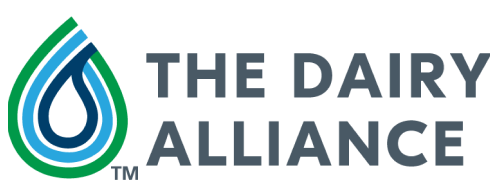Milk and Creams for the Beginner Baker
This spring, you’re dabbling as a baker. You’re challenging yourself with longer recipes and discovering parts of the grocery store you never knew existed. And for your next recipe, you’ll need to grab the butter and the milk. Or is it the butter and the cream? If this part makes you scratch your head, don’t be ashamed! There are lots of dairy products that make their way into baking, and all for different reasons. Dairy products play a major role in the success of your baking, so what is the difference between the types of milk called for?
The simple answer (or the simple start to an answer) is that the different versions of milk refer to the fat content needed for a recipe. The milkfat of dairy products is the key to understanding different kinds of milk and cream a recipe may call for. Whole milk has 3.25% milkfat, while 2% milk has 2% milkfat and 1% milk has 1% milkfat. (Shocking!) Buttermilk uses 2% milkfat and skim milk has under 0.2% milkfat.
That’s the easy one. Then there are the creams, which are probably what causes the most confusion in baking. One reason is that cream isn’t used as often. Another reason is that the milk fats for each category are a range. The specific percentage depends on the brand. Light cream has about 20% milkfat, whipping cream, also known as light whipping cream, has about 35% milkfat and heavy cream, or heavy whipping cream, contains over 36% milkfat. Half-and-half, a combination of half whole milk and half light cream, has a milkfat percentage in the teens.
Butter, meanwhile, is 80% milkfat.
If you deviate from the recipe, you’ll need to think about how the final product will change. Heavy whipping cream is thicker than whole milk, so although 1 cup of milk will be as much liquid as 1 cup of cream, the fat difference means the mixture will bake—and taste— differently. To substitute milk for creams or creams for milk, you must adjust for the fat difference.
Not only will you have to use math to substitute, but you’ll also have to think of what that milk is supposed to do in the recipe. Milk is used to create a lightness to your creations. Creams provide structure, which is why they’re used to make whipped cream. They can also give more flavor to a product. (Think how foods taste with milk compared to when you use buttermilk.) Depending on its role, you may need to keep additional ingredients like eggs stocked up for when you run out.
Then there are the pantry staples evaporated milk and sweetened condensed milk. Evaporated milk is a canned shelf-stable milk with most (60%) of the water found in milk removed, making recipes like homemade fudge and ice cream richer and creamier. Sweetened condensed milk is also a canned shelf-stable milk, but with much more sugar, bringing more sweetness to desserts like the No-Churn Toasted Walnut Buttermilk Ice Cream.
Though it seems these recipes are just trying to make your shopping trips longer and confusing, it’s important to pick the dairy milk or cream right for your creation. With these basics, you can begin learning which dairy products you’ll want to use in your recipes. Happy baking!






